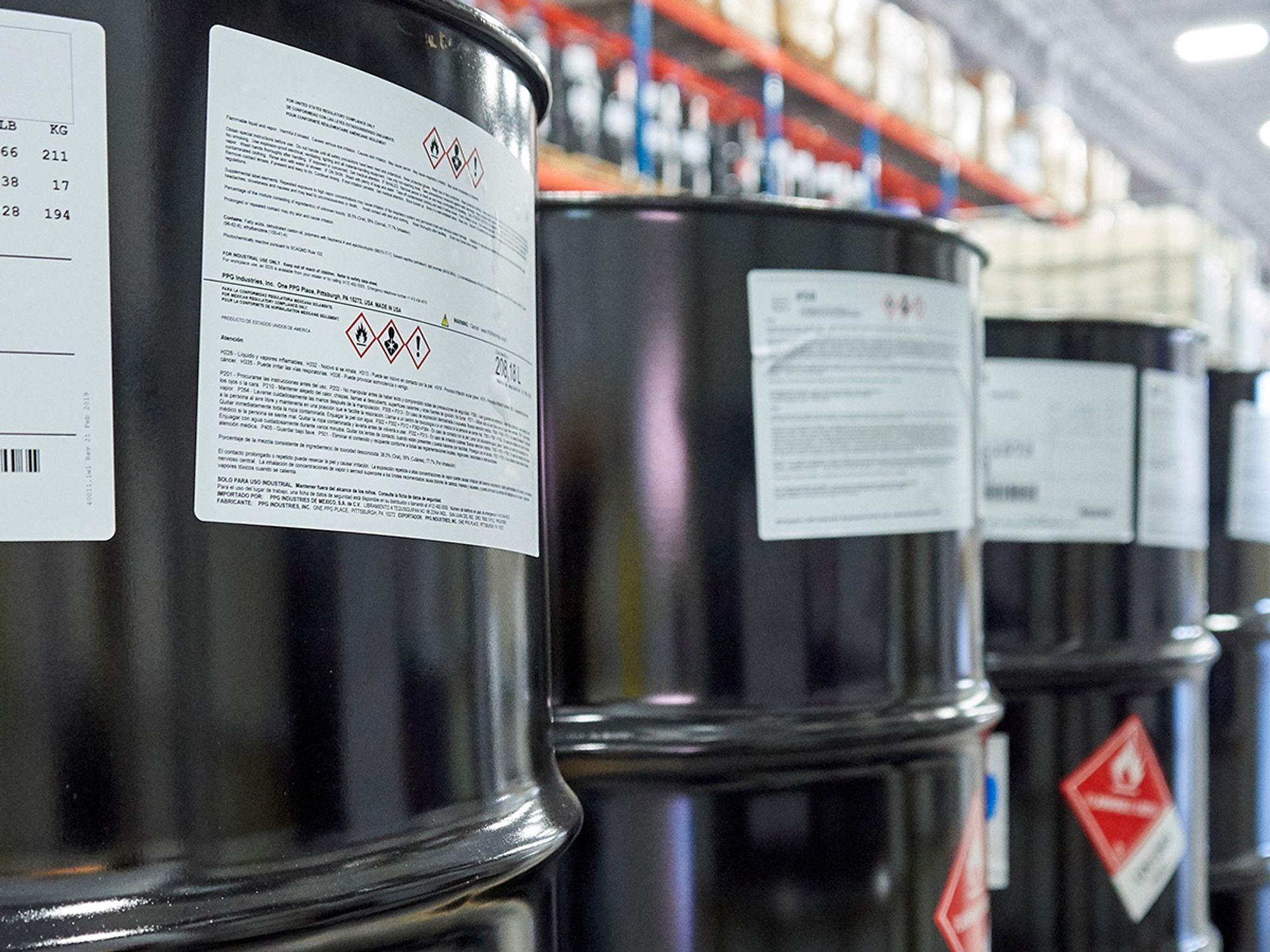Non-bulk packaging

- Hazardous Materials Regulations define specifics for non-bulk packaging used to transport hazardous materials, including maximum capacity, maximum net mass, and water capacity.
A non-bulk packaging is a packaging which has:
- A maximum capacity of 450 L (119 gal) or less as a receptacle for a liquid; or
- A maximum net mass of 400 kg (882 lb) or less and a maximum capacity of 450 L (119 gal) or less as a receptacle for a solid; or
- A water capacity of 454 kg (1,000 lb) or less as a receptacle for a gas.
The definition for non-bulk packaging can be found in 171.8.
Common types of non-bulk packagings include boxes, drums, barrels, jerricans, pails, bags, composite packagings, and cylinders.
Non-bulk packagings that meet the manufacturing requirements in the regulations must be marked with the appropriate United Nations (UN) marking specified in 178.503 or for cylinders the markings specified in Part 178, subpart C.
Non-bulk packaging is a term that is used throughout the Hazardous Materials Regulations. Knowing if a hazmat package is bulk or non-bulk is an essential piece of knowledge when determining what requirements in the regulations apply to the shipment.
- Hazardous Materials Regulations define specifics for non-bulk packaging used to transport hazardous materials, including maximum capacity, maximum net mass, and water capacity.
A non-bulk packaging is a packaging which has:
- A maximum capacity of 119 gal (450 L) or less as a receptacle for a liquid; or
- A maximum net mass of 882 lb (400 kg) or less and a maximum capacity of 119 gal (450 L) or less as a receptacle for a solid; or
- A water capacity of 1,000 lb (454 kg) or less as a receptacle for a gas.
The definition for non-bulk packaging can be found in 171.8.
Common types of non-bulk packagings include boxes, drums, barrels, jerricans, pails, bags, composite packagings, and cylinders.
Non-bulk packagings that meet the manufacturing requirements in the regulations must be marked with the appropriate United Nations (UN) marking specified in 178.503 or for cylinders the markings specified in Part 178, Subpart C.
Non-bulk packaging is a term that is used throughout the Hazardous Materials Regulations. Knowing if a hazmat package is bulk or non-bulk is an essential piece of knowledge when determining what requirements in the regulations apply to the shipment.
